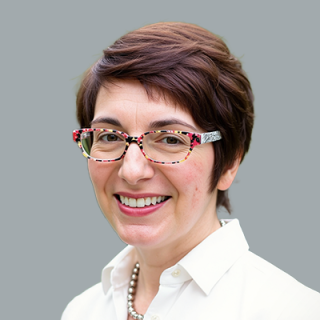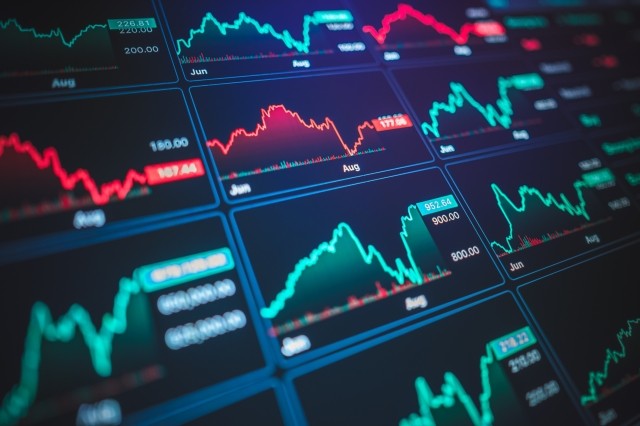Blog
De-SPACs Are Ready to Take Off
With the SPAC market heating up, we are seeing a huge uptick in activity on the SPAC IPO side. All these new SPACs will be searching for great deals in no time, so in this edition of the SPAC Notebook we dive into what is currently happening—or about to happen—with de-SPAC transactions. To delve into this topic, I am joined by two rising stars and partners from Doug Ellenoff's team at Ellenoff Grossman & Schole.
Meredith Laitner and Trevor Okomba are corporate mergers and acquisitions (M&A) and securities attorneys with broad transactional experience. De-SPAC transactions compose a significant part of their practices. Here are highlights of our conversation, edited for length and clarity. You can watch the entire discussion below.
Encouraging Trends in the SPAC Market
Yelena Dunaevsky: Some serious deals are going through the SPAC market now. There have been 14 deals so far this year, with $9 billion in value. Ninety-six transactions have already been announced, with a projected $50 billion in value, and another 119 SPAC teams are searching for deals.
We haven't seen this extent of activity in a while, and we want to look at how it is affecting the de-SPAC environment.
Meredith Laitner: It's an exciting time to be a practitioner in this space. There are some exciting new entrants, but we're also seeing some experienced SPAC sponsor teams and a high quality of overall targets. This means that the operating companies that will be taken public through de-SPAC transactions are more familiar with the de-SPAC process than some of those that consummated deals in the past, which is encouraging.
Also, there seems to be a return towards institutional capital, and we are seeing more private investment in public equity (PIPE) capital coming back into the marketplace. In the coming months, it will be important to have some successful de-SPAC closings to solidify these positive gains. We are seeing a number of encouraging signs so far.
Yelena Dunaevsky: The general economic market atmosphere feels somewhat like what we saw in 2020 because there's still volatility in the market and investors are looking for a safe place to park their funds while they wait out the economic and political uncertainty . It seems like whenever volatility and uncertainty become the norm in the market, the SPAC vehicle becomes that much more attractive to investors.
Meredith Laitner: Another encouraging trend we've seen is that the operating companies—the so-called target companies—that had been considering going public through a traditional IPO process are now opting to pursue de-SPAC transactions.
More Positive Signs for De-SPACs
Yelena Dunaevsky: We continue to see a favorable environment in the insurance space for de-SPACs specifically. Of course, this relates to directors and officers (D&O) insurance, where the premium pricing is the lowest we've seen in years.
Carriers are interested in writing these kinds of deals. They are open to negotiations on the terms and pricing and the structures of how the insurance covers the go-forward, the combined entities, the SPAC, and the target entities. However, they are asking questions about financing and are still concerned with redemptions.
Trevor Okomba: There are some noteworthy data points in the de-SPAC market that reflect an increased interest in incorporating the go-forward public company in jurisdictions other than Delaware. And we've seen this play out in the de-SPAC market.
A couple of weeks ago, we saw what we believe to be the second de-SPAC transaction where the go-forward public company is incorporated in Texas.
Read about SPAC incorporation:
Trevor Okomba: We've also seen encouraging financial signs. Particularly in a high redemption environment, de-SPAC transactions depend on PIPE and other financing. Over the past few weeks, what’s encouraging is that de-SPAC transactions are announcing PIPE financing at the signing of the deal. Up until recently, you would typically need to wait until closer to the closing of the deal to see PIPE financing.
For example, we saw two recent transactions announced with pretty sizable PIPEs at $10 per share, one in the bitcoin sector and one in the nuclear energy sector. It appears that the PIPE market and financing for de-SPAC transactions are coming back to a more normal level.
Meredith Laitner: I think we're beginning to see some promising signs from regulators. There have been some very constructive conversations with the Financial Industry Regulatory Authority (FINRA), for example, and we think there are encouraging signs that the changes in Securities and Exchange Commission (SEC) leadership, perhaps, will begin to flow to other regulatory and quasi-regulatory bodies over the coming months.
What's Ahead for De-SPACs?
Yelena Dunaevsky: When it comes to the SEC SPAC rules, there seems to be a whiff of a shift potentially with how some of these rules are going to be incorporated into what's happening with the SPACs and de-SPACs on a day-to-day basis. Meredith, do you have any thoughts for us on anything you're seeing, as far as the interpretation of these rules and how the market is able to absorb them?
Meredith Laitner: With Paul Atkins confirmed as the new chair of the SEC, the expectation is that there may be some reversals of trends from the last administration and more focus on capital formation and encouraging access to the capital markets.
On de-SPAC deals in particular, we haven't yet seen a major shift in either the timing with respect to responses from the SEC on submissions of registration proxy statements or the number of comments up to this point. There also hasn't been a major shift from a disclosure perspective, or the advice that we've been providing to our SPAC and de-SPAC clients about SEC disclosure and the review process really hasn't shifted materially.
That being said, there haven't been a very large number of de-SPAC closings even over the past 12 months. So there are aspects of the new SPAC rules that are still being worked through.
Yelena Dunaevsky: What's also interesting on the litigation side of the equation is that even though securities class action filings are down, securities class action settlements are up. We saw 15 securities class action settlements at the end of 2024 and they all settled for a combined amount of $305 million, which is a significant increase from the previous years and previous settlements.
In January of this year, we saw two very large settlements of securities class actions: $80 million and $126 million. Just to put it in perspective, most of the time, insurance coverage for a de-SPAC transaction doesn't go as high as those numbers. It'll be interesting to see if, for de-SPAC transactions, based on these kinds of high-dollar amount settlements, the parties are going to start opting for higher limit coverage.
Trevor Okomba: We’ve seen an uptick in SPAC IPOs, and I think we'll see a corresponding uptick in those SPACs seeking and completing de-SPAC transactions. Many of these new SPACs are sponsored by experienced and serial SPAC sponsor groups. So, the upcoming year looks promising from the perspective of de-SPAC transactions.
Author
Table of Contents









